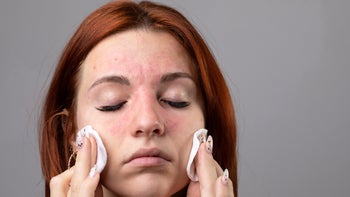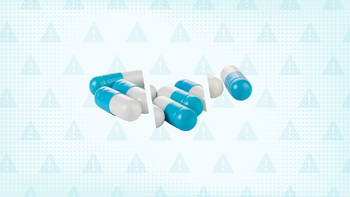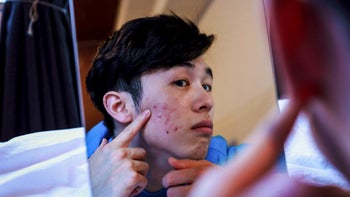
What Does Hormonal Acne Look Like, and How Do You Get Rid of It?
Key takeaways:
Hormonal acne is acne some people get in their 30s, 40s, and beyond.
The main cause is changing hormone levels.
Hormonal acne can happen anywhere on the body, but it’s most common on the chin, jawline, neck, and chest.
In addition to standard acne treatments, hormonal medications, like spironolactone and birth control pills, can help.

Hormones play a role in all types of acne. Most commonly, hormone changes in adolescents and young adults trigger an increase in sebum (skin oil), which clogs pores and causes acne.
But hormones don’t just fluctuate in teenagers — these hormonal changes can continue well into adulthood. And this can mean ongoing acne. In other words, hormonal acne can continue or develop long after adolescence.
Knowing if your acne is hormonal is important because the treatment strategies may be a bit different to typical acne treatments. Here’s what to look for.
Search and compare options
How do you know if your acne is hormonal?
If you’re in your late 20s, 30s, or beyond and still dealing with breakouts, there’s a good chance you have hormonal acne. It’s more common in women, so it’s sometimes called adult female acne. But it can happen to anyone.
Hormonal acne is more likely to form deep, painful cysts in the skin that can take a week or more to go away. Because it’s caused by fluctuating hormones, you’re more likely to have it in certain situations:
During pregnancy or just after giving birth
Around the time of your period
During perimenopause or menopause
With a hormonal imbalance, like polycystic ovary syndrome
When taking testosterone-based (masculinizing) hormone therapy
When taking acne-causing medications, like steroids, or some progestin birth control pills
Where does hormonal acne usually happen?
Hormonal acne can happen anywhere on the body. But, unlike typical teenage acne, it’s more common on the lower part of the face and the torso.
Most people with hormonal acne have it on the chin and jawline, but it can also affect the:
Neck
Chest
Shoulders and back
Other parts of the face
What does hormonal acne look like (with images)?
People with hormonal acne can have these different types of acne spots and pimples:
Comedones: These are clogged pores, like whitehead and blackheads.
Papules: These are inflamed or infected clogged pores. They look like red, violet, or brown pimples.
Pustules: These are papules filled with pus.
Nodules: These are larger, deeper pimples that feel painful and hard to the touch.
Cysts: These are nodules filled with pus.
But hormonal acne is more likely to cause deep, painful cysts and nodules. And these are more likely to leave scars or skin discoloration as they heal (this is called post-inflammatory hyperpigmentation).


How to treat hormonal acne
Treating hormonal acne depends on a few different things:
How severe your symptoms are
How much your symptoms bother you
Which treatments you’ve tried in the past
Combining different treatments usually works best. Your primary care provider or dermatologist can help you come up with the best plan for you.
As with other types of acne, if your symptoms are mild, then topical medications (like creams) might be enough:
Over-the-counter medications, like benzoyl peroxide and salicylic acid, can be combined with other treatments.
Topical retinoids, like tretinoin and adapalene, help old skin cells shed and are the cornerstone of acne treatment.
Topical antibiotics, like clindamycin and dapsone, can help by killing bacteria and lowering inflammation.
Winlevi is a new prescription cream that treats hormonal acne, possibly by lowering oil production in your skin.
If your symptoms are more severe, then you may need prescription medication in the form of a pill:
Antibiotic pills, like doxycycline and minocycline, help kill bacteria and lower inflammation. People usually take these for a short period of time, like 3 months.
Birth control pills that contain estrogen and progestin, like Yaz and Ortho Tri-Cyclen, can help lower acne-causing hormones (testosterone).
Spironolactone is a medication used for high blood pressure. But spironolactone is also used off-label for hormonal acne because it helps lower testosterone levels.
Isotretinoin is a retinoid pill that works well to treat severe cystic acne. It can cause many side effects, so people who take it need blood work to monitor their safety.
Does hormonal acne go away?
With the right treatment, hormonal acne can be managed. But for some people, hormonal acne returns after treatment. In other cases, hormonal acne eventually resolves on its own as hormone levels change in the body.
How to care for your skin with hormonal acne
No matter what treatment you start for hormonal acne, a good skin care routine will go a long way. Here are some basic skin care tips:
Wash your face twice a day with water and a gentle cleanser.
Wash your face after you sweat, too.
Avoid harsh soaps and coarse washcloths, and stick to mild and non-comedogenic products (meaning they won’t clog pores).
Don’t pick at your skin or pop or squeeze your acne pimples.
Protect your skin from the sun.
To help nourish and care for your skin from the inside, stick to these healthy habits:
As much as possible, eat a whole-foods diet that’s low in sugar and includes healthy fats, like omega-3
If you think milk and dairy products are triggering your acne, try cutting them out for at least 4 weeks. And then you can slowly reintroduce them to see how your body responds.
Exercise regularly and find other ways to manage excess stress.
The bottom line
If you’re dealing with acne as an adult, you’re not alone. Hormonal acne is caused by changing hormone levels in adulthood, and it’s more common than people think. Standard acne treatments can help hormonal acne, but sometimes medications that address underlying hormone imbalances work better. You may have to try a few different medications before finding the right combination for you.
Why trust our experts?


Images used with permission from VisualDx (www.visualdx.com).
References
Bagatin, E., et al. (2019). Adult female acne: A guide to clinical practice. Anais Brasileiros de Dermatologia.
Radi, R., et al. (2022). Treating acne in transgender persons receiving testosterone: A practical guide. American Journal of Clinical Dermatology.

























